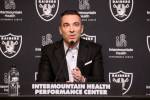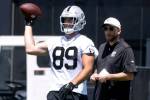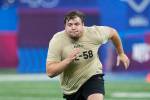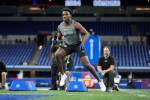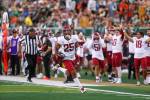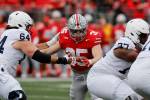Proper helmet-fitting and tackling techniques help players score in safety
The play is called, the ball is snapped, is your player prepared for what comes next? Three million American children - ages 6 to 14 - play organized tackle football, placing it among the country's most popular youth sports, according to USA Football. And for players, coaches and parents, safety is always in season on the football field. While no helmet can claim to guarantee absolute protection from concussions, it's never too early or too late for players, coaches and parents to understand proper helmet-fitting and tackling techniques.
"Football helmets are designed to provide a number of protective benefits to the player," says Thad Ide, senior vice president of research and development at Riddell Sports, a leading football helmet manufacturer. "A proper, secure fit ensures all protective elements of the equipment are positioned where our engineers intended them to be to protect the athlete."
To encourage a safer football season, Riddell provides instruction for proper helmet fitting, and USA Football, the sport's national governing body in the United States, promotes fundamentally sound tackling techniques to better protect players at all levels.
Putting the helmet on - Measure the circumference of the player's head an inch above his eyebrows, adjusting the helmet size accordingly. Then, with thumbs over the bottom of the face pads and fingers inside of the helmet, the player should pull the helmet into position. Once the helmet is pushed down completely, ensure the front is an inch above each eyebrow.
The chin strap should be centered firmly over the chin. Its purpose is to help hold the helmet in place, so the face pads should fit firmly against the face.
Checking for proper fit - Twist the helmet from side to side on your player's head. The skin of their forehead should move with the front pad. As a test, interlock hands on top of the player's helmet and press down; if the player feels pressure on the crown of the head, instead of the brow, it is a sign of a secure fit. Even if a helmet feels too snug, there can still, potentially, be room for the athlete's head to move, which can lead to injury. Make sure it's not too tight or too loose.
Taking off the helmet - First, players should unbuckle the chin strap on both sides. Then, place an index finger into each ear hole, press the face pads with their thumbs and lift the helmet up over the head.
USA Football's tackle progression model:
Breakdown position - With the player's knees bent at shoulder-width apart, upper-body at a 45-degree forward lean, chin up and above the toes, and his weight on the balls of his feet; spring forward with the snap of the football. While closing in on the ball-carrier, players should keep their eyes below the runner's facemask to leverage their body's center of gravity.
Buzz - Once within three yards of the ball-carrier, players should buzz their feet with quick, choppy steps to control their balance while continuing to gain forward ground. Keep the chin up and head and shoulders squared at all times, even if the ball-carrier is running on an angle.
Hit position - Closing within one yard of the ball-carrier, take a short downhill power step as if into an imaginary hole, keeping a deep bend in both knees, eyes belt buckle-high, head and shoulders square, chin up and hands pulled back just beyond the hips. While keeping a forward lean, the player's front foot should be below the outside of his chin, and his back foot directly below his hip.
Rip - On contact, swing both arms in an uppercut motion and grab the back of the ball-carrier's jersey at the top the numbers, while keeping elbows tight against the ball-carrier's side.
Shoot - While ripping arms into the ball-carrier, simultaneously snap the hips open and upward toward the front jersey numbers, forcing the head to move up and away from the oncoming runner. To finish, lift the ball-carrier off the ground while continuing to drive legs forward.
"USA Football directs youth coaches to incrementally incorporate proper contact into their practices, which lessens the amount of incidental contact that players receive through their helmets," says Dr. Stanley Herring of USA Football's Football and Wellness Committee and the NFL's Head, Neck and Spine Committee. "This is a strong step forward for player safety in youth football that any youth sport should consider emulating."
This season, everyone can get involved in protecting players by supporting proper helmet fitting for each practice and game and enforcing smart, safe tackling techniques. To learn more, visit www.riddell.com/fitting-guides.


















